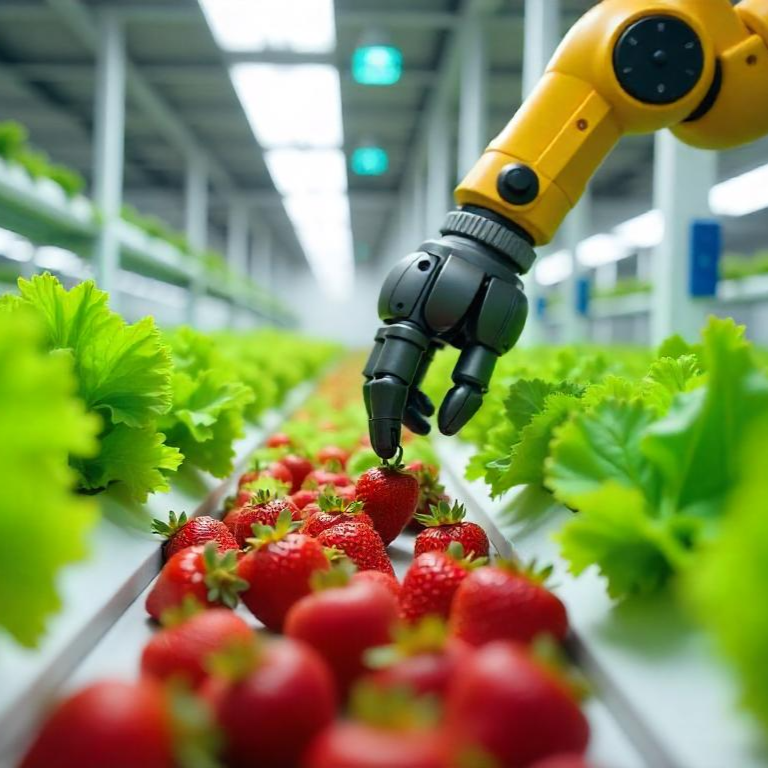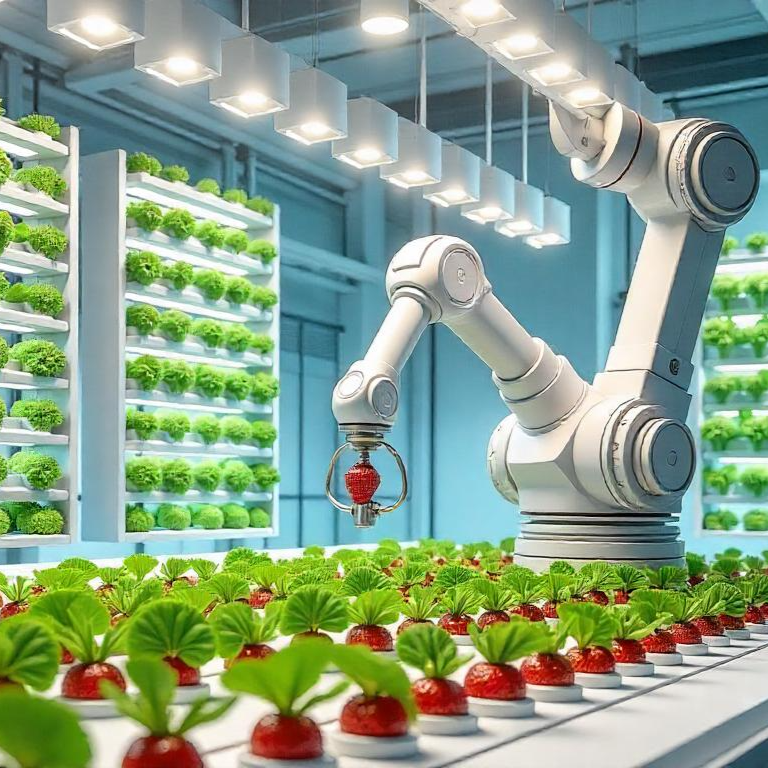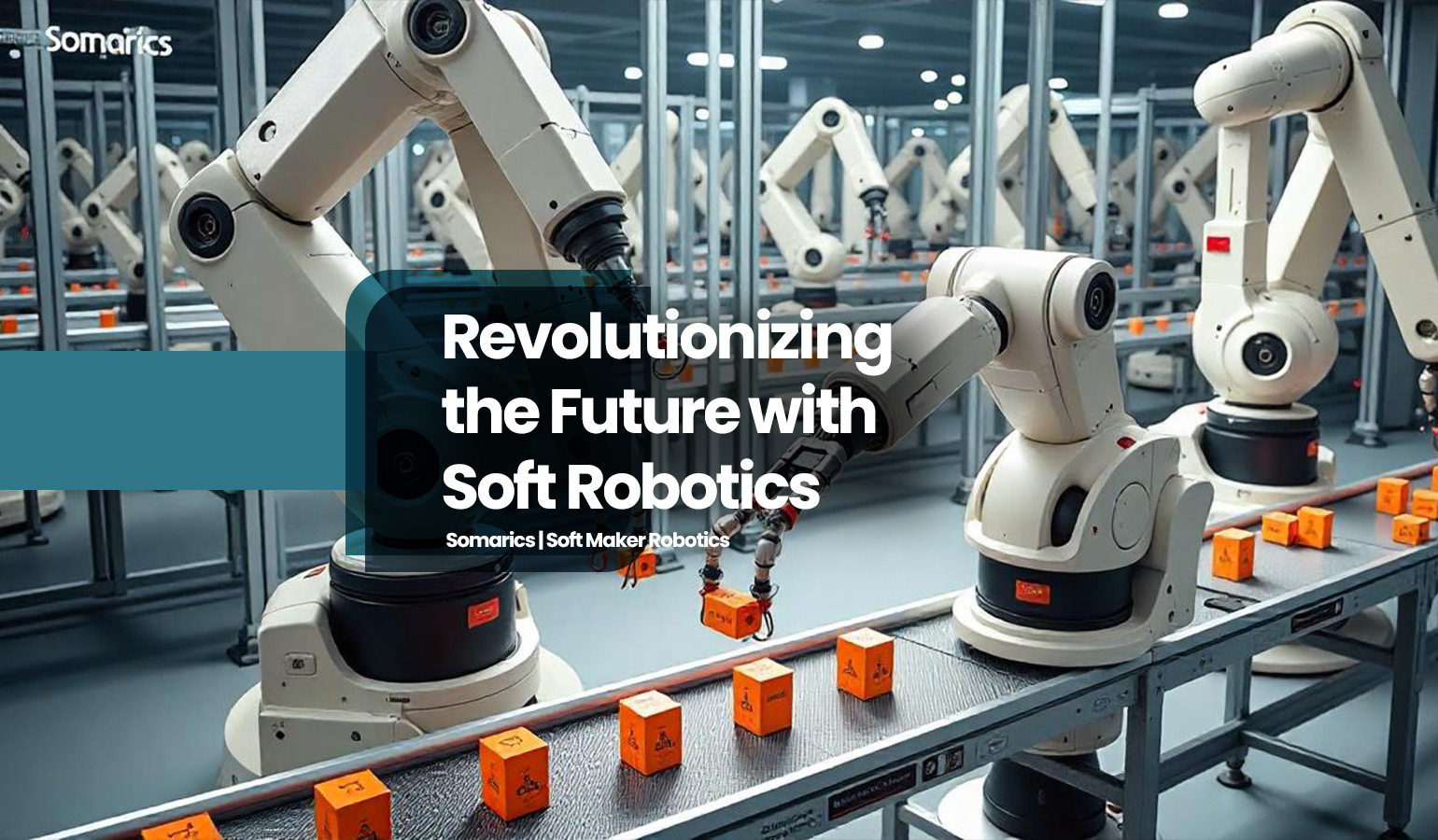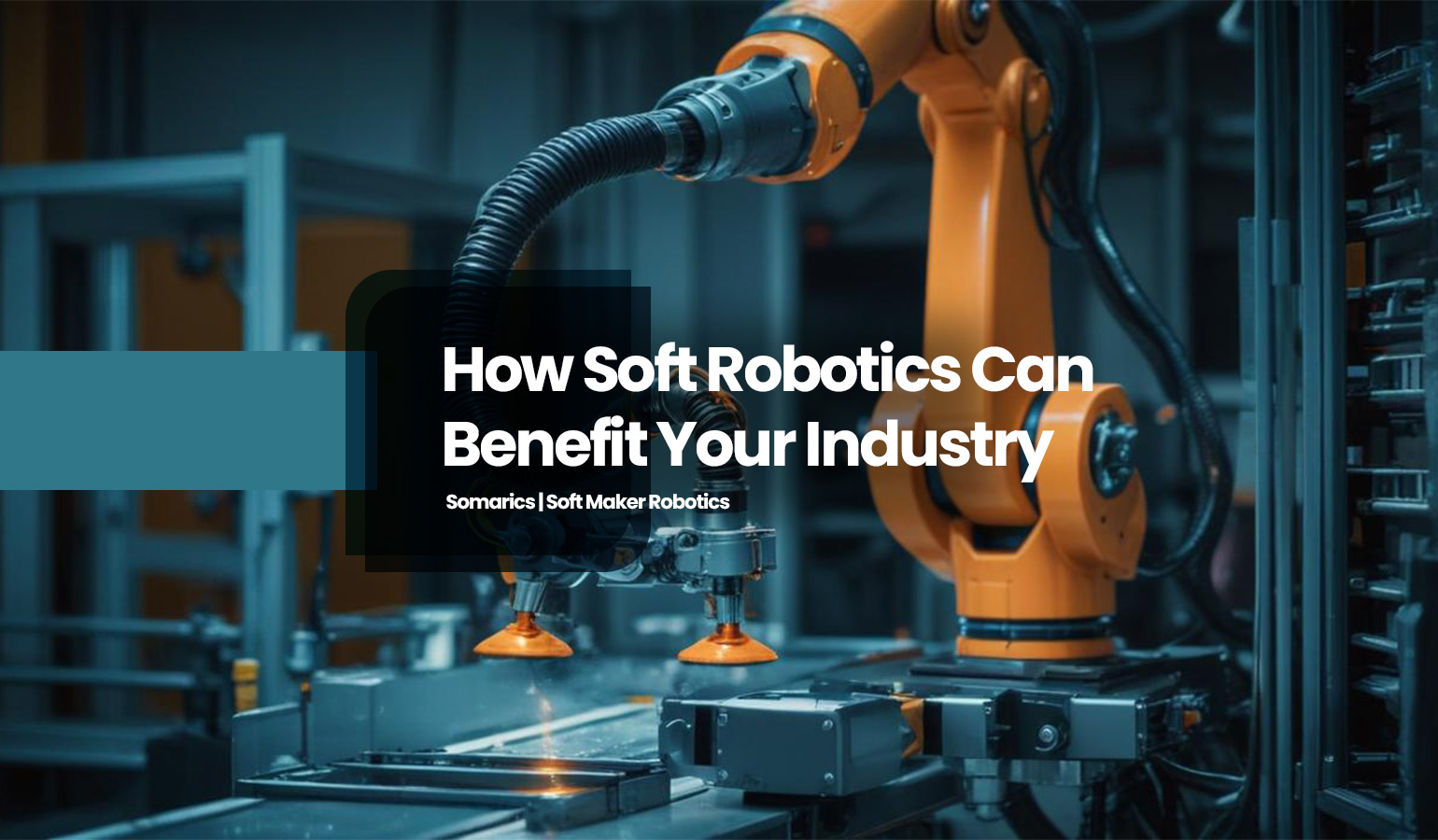Breaking Barriers
How Gentle Handling Enhances Productivity
Vertical farming is revolutionizing agriculture by enabling food production in controlled environments, often within urban settings. However, one of the primary challenges in vertical farming is the efficient handling of delicate crops without causing damage. In these highly controlled environments, where space is limited and crops such as lettuce, strawberries, and herbs require careful handling, there is an increasing need for a flexible, adaptable automation solution. Traditional rigid robotic systems often lack the dexterity to operate effectively in these confined spaces without damaging crops.
A handling solution that ensures gentle interaction with produce while maintaining efficiency is critical for the future of vertical farming. In particular, a combination of a flexible robotic arm and a soft gripper system can offer the adaptability necessary to manage different types of crops, optimize space utilization, and reduce labor dependency. Additionally, with labor shortages and rising operational costs in the agricultural sector, automation is no longer a luxury but a necessity. Investing in advanced automation solutions tailored to delicate crop handling ensures long-term sustainability and operational success for vertical farms.
Why Soft Robotics is Essential for Vertical Farming
With the global population expected to surpass 9 billion by 2050, the demand for sustainable and space-efficient food production is increasing. Vertical farming is becoming a viable solution for urban food supply, but scaling operations requires automation. A robotic package that includes a soft robotic arm and a soft fingered gripper is crucial for handling delicate crops efficiently without damage.
In this context, the need for specialized automation solutions tailored for confined vertical farming environments is critical. Many existing robotic solutions are too rigid or lack the adaptability required for gentle handling. A soft robotic arm and gripper system offers the flexibility necessary to maintain crop integrity while boosting efficiency and lowering labor costs. As consumer demand for high-quality, locally grown produce increases, vertical farms must adopt technology-driven approaches to remain competitive and scale production without compromising quality.
The Challenges of Handling Crops in Vertical Farming
Vertical farms maximize space utilization by growing crops in stacked layers, often in hydroponic or aeroponic systems. While this method boosts yield and resource efficiency, it presents challenges, such as:
Delicate Crop Handling: Many crops grown in vertical farms, such as lettuce, strawberries, and herbs, are fragile and prone to bruising or damage.
Labor-Intensive Processes: Traditional harvesting and handling methods rely heavily on manual labor, which increases costs and reduces scalability.
Limited Space for Large Machinery: Conventional robotic solutions often lack the adaptability to navigate confined spaces in vertical farming setups.
Handling Bulb-Based Crops: Certain vertical farm crops, such as onions and garlic, require specialized handling to avoid damage to their bulbs.
Flexibility in Complex Spaces: The need for robotic solutions that can maneuver in compact and enclosed vertical farming environments remains a key challenge.
Emerging AgriTech Trends: The shift towards AI-driven farming requires seamless robotic integration with digital farming ecosystems.
Scalability Concerns: As urban vertical farms expand, automation solutions must be scalable and adaptable to new configurations and crop types.
Environmental Factors: Controlling humidity, temperature, and light exposure while integrating robotics is crucial to sustaining optimal plant growth.
Market Expectations: Consumers expect fresh, damage-free produce, increasing the pressure on farms to maintain consistent quality.
Soft robotics provides an ideal solution to address these challenges by offering adaptive, flexible, and safe handling mechanisms. The combination of a soft robotic arm and a soft gripper creates an effective system for increasing efficiency in vertical farms while protecting delicate crops.


How Soft Robotics Transforms Vertical Farming
Gentle Harvesting with Soft Robotic Grippers
Soft robotic grippers mimic the dexterity of human fingers while applying minimal pressure. This makes them ideal for:
Picking fragile crops like leafy greens and strawberries without bruising them.
Handling crops of different shapes and sizes without needing complex reprogramming.
Reducing labor dependency by automating the harvesting process efficiently.
Enhancing adaptability for various crop types through seamless integration with smart farming technologies.
Improving yield prediction by integrating with AI-driven analysis tools that assess crop readiness.
Reducing water usage through optimized handling processes that prevent unnecessary moisture loss.
Enhancing automation speed while maintaining safety and product quality.
Supporting organic farming initiatives by reducing human interference in sensitive growing environments.
Efficient Crop Management with Soft Robotic Arms
Soft robotic arms assist with the controlled movement of harvested crops within a vertical farm. Their advantages include:
Smooth, gentle motion that minimizes stress on plants.
Compact and lightweight design, making them ideal for confined vertical farming setups.
Energy efficiency, reducing operational costs compared to traditional automated systems.
High flexibility to maneuver in tight spaces, ensuring efficiency even in densely packed vertical farms.
AI-driven adaptability, allowing integration with precision agriculture systems.
Seamless compatibility with hydroponic and aeroponic systems, enhancing operational synergy.
Enhanced usability for workers, ensuring an intuitive interface for seamless human-robot collaboration.
Better post-harvest logistics, facilitating smoother transitions from farm to packaging.
Customizable handling pressures, making them adaptable to multiple types of produce without causing damage.
Optimizing Sorting and Packaging with Soft Robotics
Beyond harvesting, soft robotics solutions are also beneficial in sorting and packaging processes. A soft gripper can:
Sort produce based on ripeness and quality using integrated AI vision systems.
Gently place crops into packaging units without damage, improving shelf life and quality.
Ensure consistency and hygiene by reducing human contact with produce.
Adapt to bulb-based crops, ensuring their delicate structure remains intact.
Leverage predictive analytics to enhance operational efficiency and waste reduction in packaging lines.
Facilitate sustainable packaging solutions by integrating robotic packaging automation to minimize waste and reduce plastic usage.
Enhance consumer satisfaction by maintaining superior produce quality from farm to table.
Increase production throughput, optimizing productivity for large-scale vertical farming operations.
Provide seamless integration with eco-friendly packaging solutions, reducing plastic dependency in the supply chain.





